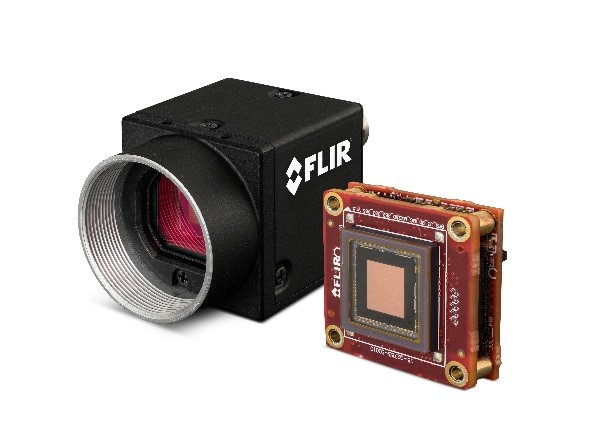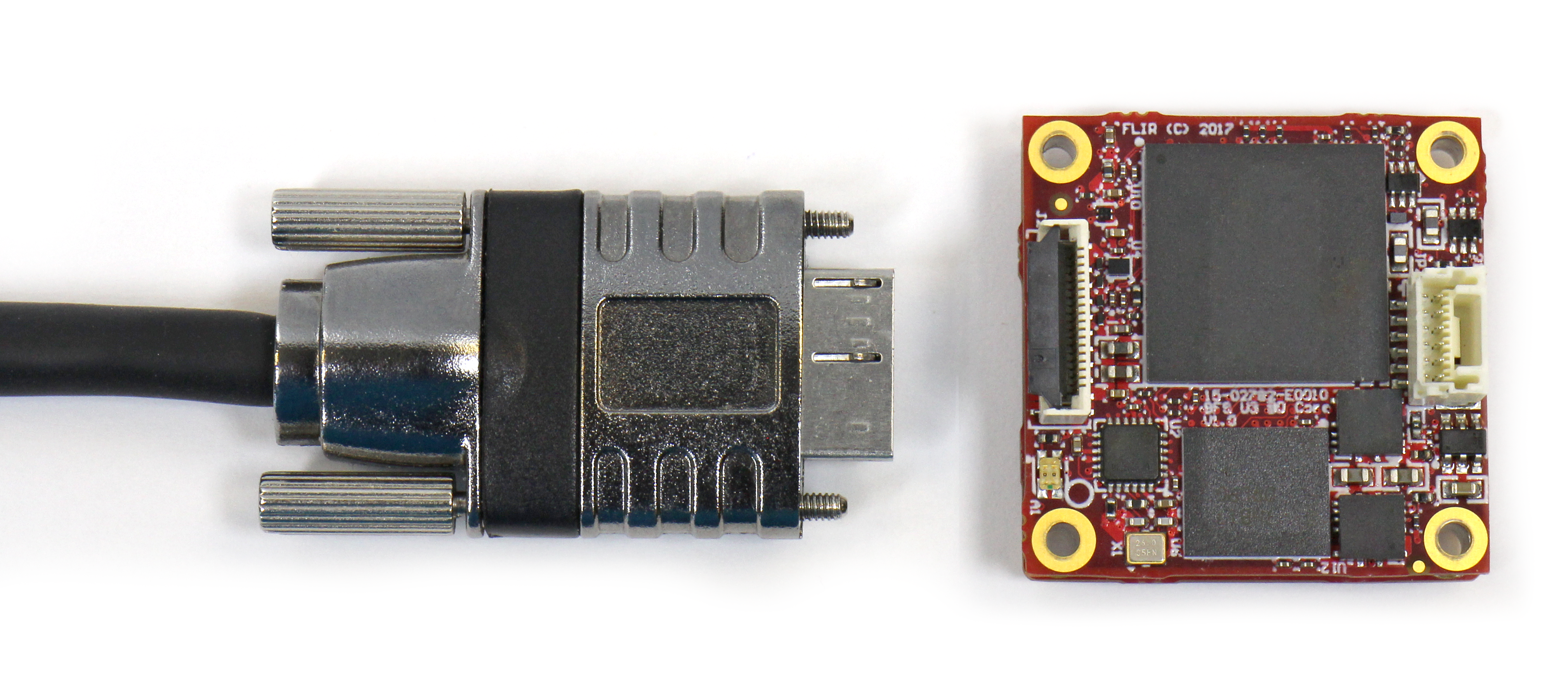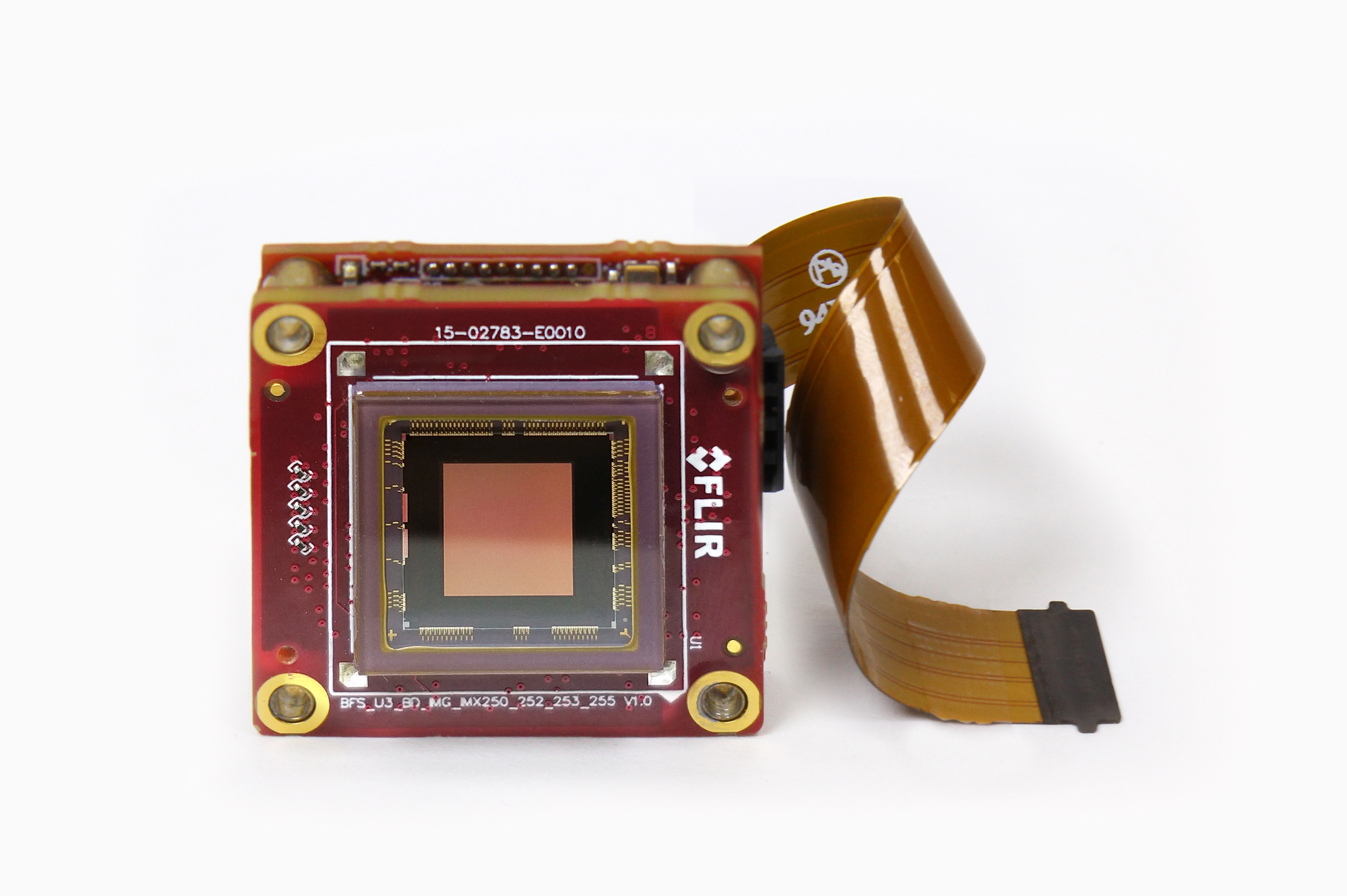Board level camera integration guide
Introduction
The availability of compact and powerful single board computers is enabling exciting new product designs. Board level machine vision cameras can be a great way to reduce a product’s size while supporting custom or non-standard optics and simplifying manufacturing. Before selecting a board level camera, there are several important factors which should be considered. These include the form factor, the interface, lens mounting, thermal management and software support.

Form Factor
When transitioning from cased to board level cameras, system designers should carefully consider their imaging and camera performance requirements. Many small board level cameras only support low resolution sensors, few GPIO lines, and limited on-camera features. Conversely, the board level variants of many full-featured machine vision cameras are simply standard cameras with their cases removed. While these cameras may achieve the required imaging performance, they may not be significantly smaller than standard cased models. Such cameras frequently use standard GPIO and interface connectors which are bulky and not ideal for embedded applications.

The connector on an industrial locking cable is about the same size as a Blackfly S board level camera.
FLIR’s board level Blackfly S cameras were designed from the ground up with embedded systems in mind. They deliver the same imaging performance, GPIO, and rich feature-set of cased Blackfly S models in a remarkably compact 29mm x 29mm x 10mm form factor. Compact GPIO and interface connectors yield addition space savings. All board level FLIR Blackfly S cameras with sensors from 1/3” to 1.1” share the same form factor. A consistent form factor across multiple camera models makes developing product variants easy.
Lens Mounting
Board level cameras are an attractive option for customers looking to integrate non-standard optics or to place the image sensor as close to their target as possible. With no fixed lens mount, board level cameras give designers the freedom to select optics other than the standard C, CS or S-Mount lenses commonly used in the machine vision industry. This design is also ideal for biotechnology and laser beam profiling applications which frequently use no lens at all. Board level cameras enable the lens mount to be integrated into other product parts. Moulding a lens mound directly into a product’s housing could reduce costs by simplifying manufacturing and assembly. To evaluate a board level camera which does not ship with a lens mount, a mount accessory should also be purchased. If cased models with identical sensors and features to board level models are available, these can be used as development platforms.
Thermal Management
Cased machine vision cameras rely on the surface area of their cases to dissipate heat generated by the sensor, FPGA and other components. With no case, high-performance board level cameras may have additional design requirements to ensure they are operating within their recommended temperature range. Providing adequate heat-sinking is key. Manufacturers will commonly provide a maximum junction temperate for this highest temperature component. On FLIR Blackfly S cameras, the maximum junction temperature of the FPGA is specified. System designers must ensure that their thermal management solution meets this guideline. The size of the heatsink, the surface area of the chassis the camera is mounted to, or the type of active cooler required will depend on the sensor, the frame rate and the amount of on-camera image processing being carried out.
Interface
USB 3.1 Gen 1 is an ideal interface for embedded systems. Its ubiquity guarantees support across a diverse range of hardware from desktop PCs to ARM based single board computers (SBCs). Direct Memory Access (DMA) keeps latency to a minimum without the need for filter drivers. USB 3.1 Gen 1 provides power and up to 480 Mbytes/Sec of data throughput over a single cable, simplifying both mechanical and electrical design.
A key goal of embedded system designers is often to make the most compact device possible. In these cases, the maximum cable length is much less important than the volume of the cable and connector. Flexible Printed Circuit (FPC) cables can support USB 3.1 Gen 1 over cable lengths up to 30 m while requiring far less space than a traditional USB cable. High quality, locking connectors, and shielded FPC cables with locking tabs will ensure a highly secure and reliable connection.

FPC cables lie flat and take up far space than the cables typically used with cased cameras.

As the name suggests, FPC cables are flexible and can bend at twist to fit inside tightly packed systems.
Other FPC based interfaces are available. MIPI CSI is a common interface on many embedded boards. The complexity of the MIPI protocol and drivers can make development more time consuming compared to USB. Low-Voltage Differential Signalling (LVDS) based interfaces are also available and are designed to interface directly with a host-side FPGA.
Software Support
When selecting a camera for use in an embedded system, software support is an important consideration which should not be overlooked. An SDK which supports both desktop and embedded systems gives designers the freedom to develop their vison applications on familiar tools and easily deploy them to the embedded platform of their choice. FLIR’s Spinnaker SDK provides support for desktop Windows and Linux on x86, x64, and ARM based systems.
Electromagnetic Compatibility
Without the shielding provided by a case, the Electromagnetic Compatibility (EMC) of board level cameras will be different than cased models. Cased machine vision cameras from FLIR and other manufacturers are EMC certified. Board level cameras are not EMC certified. They are designed to be integrated into larger devices which will be certified as a single product. Best practices for electromagnetic interference (EMI) management should be followed for cameras just like any other electrical component.
Conclusion
Board level cameras can provide the freedom to design innovative products which are compact and simple to manufacture. Selecting a camera with the right level of imaging performance and a form factor optimized for embedded systems is critical for a successful product. Getting the most from board level cameras requires designers to consider thermal management, lens mounting, and interface options which are typically not required with standard cased cameras.